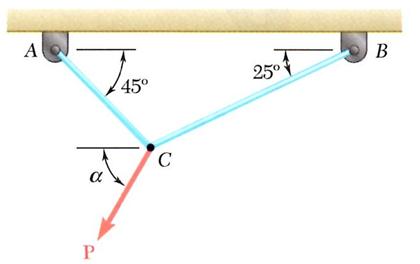Equilibrium of Forces: We have studied in school physics that if a body, under the action of a number of forces, is at rest or moving with uniform velocity, it is said to be in equilibrium.
First Condition of Equilibrium
A body at rest or moving with uniform velocity has zero acceleration. From Newton’s Law of motion the vector sum. Of all forces acting on it must be zero.
This is known as the first condition of equilibrium. Using the mathematical symbol Σ F for the sum of all forces we can write
Σ F = 0 ……………….. (2.30)
In case of coplanar forces, this condition is expressed usually terms of x and y components of the forces. We have studied that x-component of the resultant force F equals the sum of x-directed or x-components of all the forces acting on the body. Hence
ΣFx = 0 …………. (2.32)
It may be noted that if the rightward forces are taken as positive then leftward forces are taken as negative. Similarly if upward forces are taken as positive then downward forces are taken as negative.
Example 2.7: a load is suspended by two cords as shown in fig. 2.15. determine the maximum load that can be suspended at P, if maximum breaking tension of the cord used is 50N.

Solution: for using conditions of equilibrium, all the forces acting at point P are shown by a force diagram as illustrated in Fig. 2.16 where w is assumed to be the maximum weight which can be suspended. The inclined forces can now be easily resolved along x and y directions.

Applying ΣFx = 0

Putting the values
50 N + 0.866 + 26.6 N x 0.34 = w
Or w = 52 N
Interesting application
 A concurrent force system in equilibrium. The tension applied can be adjusted as designed.
A concurrent force system in equilibrium. The tension applied can be adjusted as designed.
